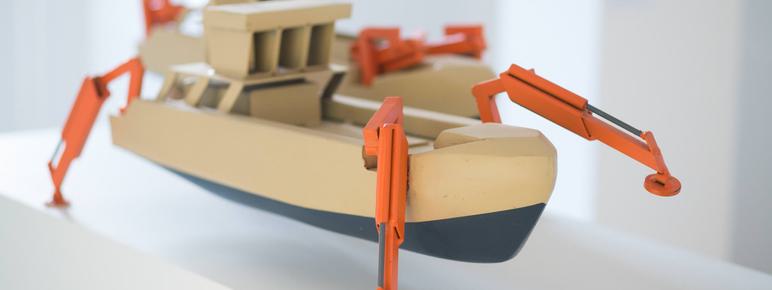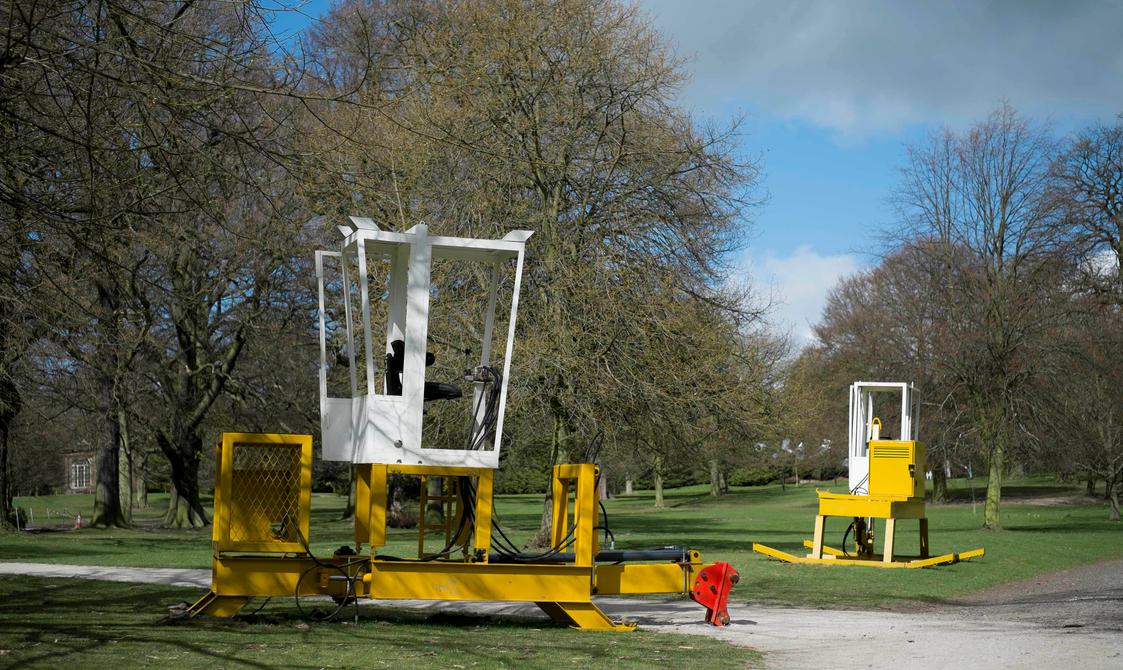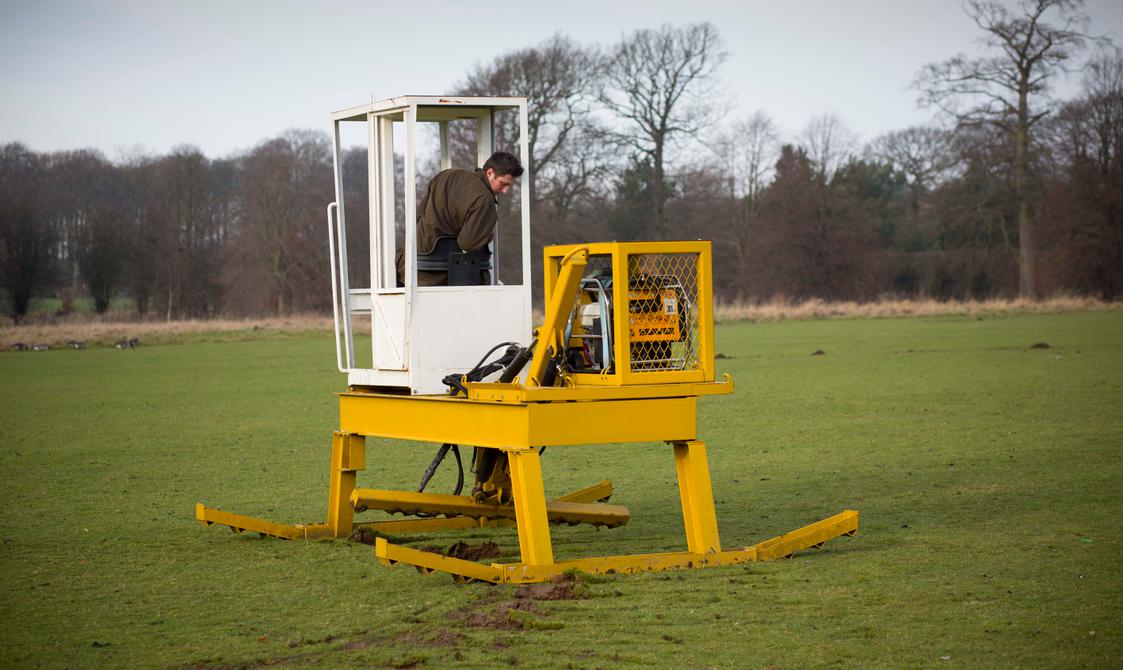
About James Capper: Divisions
James Capper’s extraordinary sculptures can walk, swim and climb mountains.
This exhibition, which showcased Capper’s ongoing interest in industrial machines and the aesthetics of mechanical power, included his Earth Marking, Offshore and Material Handling series, which both reference the monumental scale of 1970s Land Art as well as the innovation of early engineering, such as Robert Gilmour Le Tourneau’s World War II ‘earthmoving machinery’.
The exhibition featured three of Capper’s earth marking sculptures in the open air; Tread Toe (2010), Midi Marker (2012) and Exstenda Claw (2012), alongside drawings and three documentary films. The artist also worked from a public studio at YSP’s Longside, researching and developing the next evolution of his sculptures.


Throughout the duration of the exhibition, Capper tested the possibilities of his open air sculptures and demonstrated his moving sculptures to the public.
Mechanical processes are central to Capper’s work and he is interested in the innovations of early engineering. Capper is inspired by the contributions made to engineering by prolific inventor Gilmour Le Tourneau (1888–1969) who developed a number of experimental and prototype earthmoving machines, many of which were used during World War II.
Speaking of Le Tourneau’s influence on his work, Capper said: “His problem-solving was immense, it still shocks me looking through the man’s archive that he could produce all these ideas in one lifetime. I feel that it is very important to bring new ideas to art, rather than re-treading familiar paths and recycling old techniques. Le Tourneau is as important to me as any great artist that has broken down barriers. The operation of a machine becomes a performance, and the building of the machine is a demonstration of what mechanical engineering can achieve in sculpture.”
You might also like
More- News

Robert Indiana for Yorkshire Sculpture Park – A Benefit Print Exhibition
20 February 2024 - News

Laurel Prize 2022
25 August 2022 - Profile

Kerry Bishop
- Event

Journey with the Trees: A Mindfulness Walk
Join Wellness Practitioner Amy Charles for a guided walk among YSP’s trees and rediscover the healing bond between people, land and nature this winter.